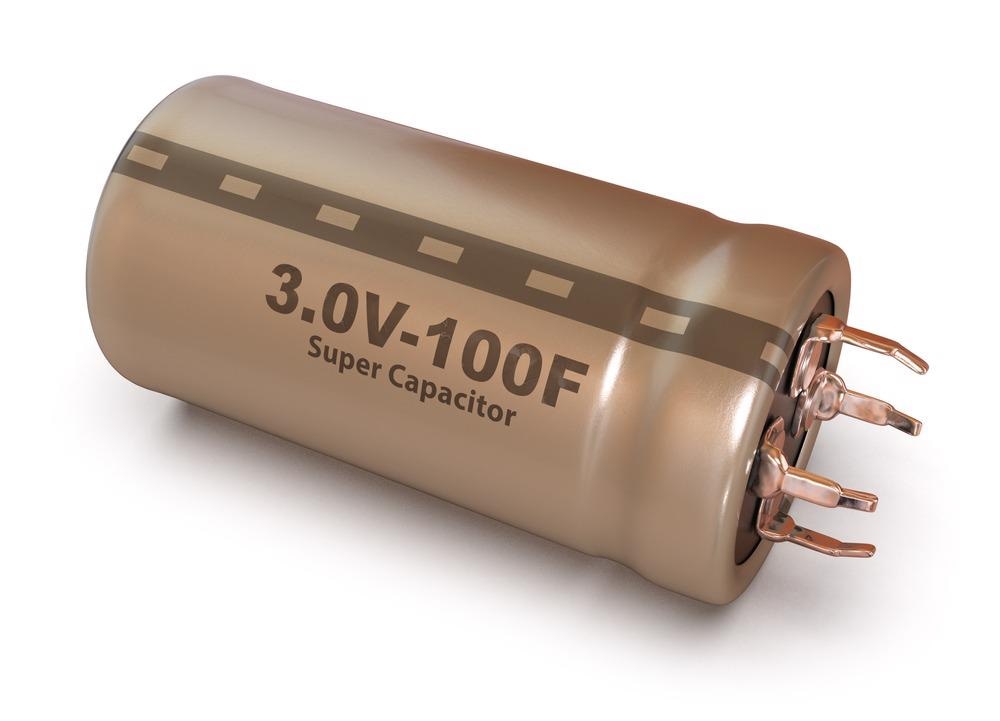A recent study published in the Journal of Alloys and Compounds focuses on increasing the energy density of transition metal oxides such as zinc-nickel-cobalt oxides (ZNCO) by heteroatom doping using sulfur.

Study: Functional sulfur-doped zinc-nickel-cobalt oxide nanorods materials with high energy density for asymmetric supercapacitors. Image Credit: Peter Sobolev/Shutterstock.com
Transition metal oxides have emerged as potential electrodes for supercapacitors in the past decade because of their low toxicity. However, due to the slow charge transport and inadequate reaction sites of these oxides, they are only suitable for a small number of applications.
The introduction of sulfur to ZNCO increases the number of oxygen vacancies, resulting in additional active sites and improved conductivity of the S-ZNCO electrode.
Transition Metal Oxides Electrodes for Supercapacitors
In recent years, various investigations have focused on clean energy storage technologies, particularly fuel cells and supercapacitors (SCs). The electrode material is a critical element of supercapacitors and influences their energy storage capacity to a large extent.
Asymmetrical supercapacitors offer certain benefits over other systems regarding power concentration, safety, extended cycle life, and distinct storing features, but their low energy density severely limits their use.
Transition metal oxides have gained a lot of interest as potential electrode materials in electrochemical supercapacitors because of their low cost, nontoxicity, and natural availability.
Previous research found that the most common transition metal oxide, namely the Co-Ni-Zn-O electrode, exhibited a better charging capability than the comparable monometallic and bimetallic oxides because of greater electrochemical reactions.
However, because of its weak intrinsic charge carrier capacity and few reaction sites, its reaction kinetics are slow, significantly inhibiting its applicability and research.
A Novel Technique to Increase Conductivity of ZNCO by Sulfur Doping
Lately, several investigations have shown that oxygen vacancies can be created by unpaired electron doping, such as phosphorus or sulfur doping, which can improve chemical reactivity, expedite charged particle transit, and improve the electrode's electrolytic reaction rates material.
According to the density functional theory (DFT) findings, the oxygen vacancies lower the binding energy, which improves electron transmission and electronic conductivity.
Typically, the electrical conductivity of organometallic sulfide electrocatalysts is greater than that of transitional metal oxide supercapacitor electrodes. However, total or severe curing of the electrode materials may result in poor operating and cycling efficiency.
Furthermore, the electron affinity of sulfur is substantially lower than that of oxygen, which means that it is more likely to form a large number of oxygen vacancies than sulfur. Therefore, it is possible to further improve the conductivity of ZNCO by introducing additional oxygen vacancies into the ZNCO compound through sulfur doping.
Synthesis of Sulfur-doped ZNCO Electrodes
The sulfur source used in this study was sodium sulfide, and sulfur-doped zinc-cobalt-nickel oxides were developed and manufactured on nickel foam nanostructures using a simple hydrothermal approach followed by ions exchange.
In the first stage, the ZNCO nanoparticles were produced using annealing techniques. The sulfur-doped zinc-nickel-cobalt electrode material was then created by sulfurizing ZNCO nanoparticles. The sulfur atoms were treated with oxygen vacancies to improve the electrodes' electrical conductivity.
Structural Characterization
A two-electrode setup was used to examine the electrolytic characteristics and conductance of the sulfur-doped ZNCO.
Different characterization techniques, such as scanning electron microscopy (SEM) and X-ray diffractometry (XRD), were used to examine the energy capacity and conversion efficiency of the manufactured supercapacitor system.
Electron paramagnetic resonance was used to examine the crystalline phase and interfacial oxidation states of sulfur-doped ZNCO materials. The size of the nanoparticles and surface charge were determined using the nitrogen atom adsorption and desorption tests.
Significance of Sulfur Doping on ZNCO Electrode
This study synthesized a unique sulfur-doped ZNCO nanomaterial via a straightforward hydrothermal and redox approach. Due to the weak conductivity of zinc-nickel-cobalt oxide, oxygen vacancies were generated by sulfur doping, and due to the synergistic impact of nanostructures, the S-ZNCO/NF material displayed good electrocatalytic characteristics, more reaction sites, and quicker reaction kinetics.
The sulfur-doped zinc-nickel-cobalt oxide's specific capacitance reached a high value of 2919.6 Fg-1. Moreover, after 5000 charge/discharge cycles, the dielectric stability was determined to be 92.65%. The specific energy of the asymmetrical supercapacitors made up of sulfur-doped ZNCO/NF (cathode) and AC (anode) was 72.97 W-h-kg-1.
To conclude, this study advances the investigation into heteroatom doping for transition metal oxides while also suggesting a new direction for creating asymmetrical supercapacitors.
Continue reading: A Review of Graphene in Energy Storage Devices.
Reference
Guo, Y. et al. (2021) Functional sulfur-doped zinc-nickel-cobalt oxide nanorods materials with high energy density for asymmetric supercapacitors. Journal of Alloys and Compounds. Available at: https://www.sciencedirect.com/science/article/abs/pii/S0925838821044637
Disclaimer: The views expressed here are those of the author expressed in their private capacity and do not necessarily represent the views of AZoM.com Limited T/A AZoNetwork the owner and operator of this website. This disclaimer forms part of the Terms and conditions of use of this website.